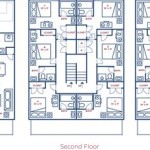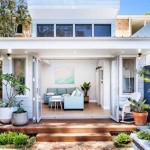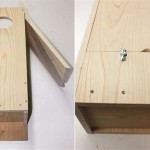Common house plans refer to pre-designed blueprints that provide a framework for constructing a house. These plans outline the layout, dimensions, and structural elements of the house, serving as a roadmap for builders and homeowners alike. For instance, a ranch-style house plan typically features a single-story design with a sprawling footprint, while a Cape Cod plan incorporates a steeply pitched roof and symmetrical facade.
Choosing a house plan is a crucial step in the homebuilding process. It determines the overall design and functionality of the house, influencing factors such as the number of bedrooms, bathrooms, and living spaces. Common house plans offer a wide range of options to suit various needs and preferences.
In this article, we will delve into the different types of common house plans available, their advantages and disadvantages, and factors to consider when selecting a plan that meets your specific requirements.
Common house plans offer several advantages, making them a popular choice for homeowners and builders alike.
- Pre-designed blueprints
- Outline layout and dimensions
- Provide structural framework
- Range of options available
- Suit various needs and preferences
- Cost-effective
- Time-saving
- Reliable and proven designs
However, it’s important to note that common house plans may also have some limitations.
Pre-designed blueprints
One of the primary advantages of common house plans is that they utilize pre-designed blueprints. These blueprints provide a detailed and accurate representation of the house’s layout, dimensions, and structural elements.
- Accuracy and precision: Pre-designed blueprints are meticulously crafted by experienced architects and engineers, ensuring accuracy and precision in every aspect of the design. This reduces the likelihood of errors or discrepancies during construction, leading to a well-built and structurally sound home.
- Time-saving: By utilizing pre-designed blueprints, builders can save a significant amount of time compared to creating custom plans from scratch. This streamlined process allows for a quicker start to construction, potentially reducing the overall project timeline.
- Cost-effectiveness: Pre-designed blueprints are generally more cost-effective than custom plans. This is because the upfront design costs have already been incurred, and the plans can be reused for multiple projects. As a result, builders can pass on these savings to homeowners, making common house plans a more budget-friendly option.
- Proven designs: Common house plans have been tested and refined over time, resulting in proven designs that meet building codes and industry standards. This reduces the risk of structural issues or design flaws, providing homeowners with peace of mind.
Overall, pre-designed blueprints offer a range of benefits, including accuracy, time-saving, cost-effectiveness, and proven designs. These advantages make common house plans an attractive choice for homeowners and builders alike.
Outline layout and dimensions
Common house plans provide a detailed outline of the house’s layout and dimensions, serving as a blueprint for constructing the home. This outline includes:
- Room layout: The plan specifies the location, size, and shape of each room within the house. This includes bedrooms, bathrooms, living spaces, kitchens, and any other designated areas.
- Room dimensions: Along with the layout, the plan provides the dimensions of each room, including length, width, and height. These dimensions are crucial for determining the amount of space available, furniture placement, and overall functionality of the home.
- Wall placement: The plan outlines the placement of all interior and exterior walls, indicating their length, height, and thickness. This information is essential for framing the house and ensuring structural integrity.
- Door and window placement: The plan specifies the location, size, and type of all doors and windows in the house. This includes entry doors, interior doors, windows, skylights, and any other openings.
Having a clear outline of the layout and dimensions allows builders to visualize the house’s structure and plan the construction process accordingly. It helps avoid errors or discrepancies during construction, ensuring the house is built to the desired specifications and meets building codes.
Furthermore, the outline of the layout and dimensions is crucial for interior design and space planning. Homeowners can use the plan to determine furniture placement, traffic flow, and the overall functionality of each room. It allows them to make informed decisions about how they want to use the space and create a comfortable and livable home.
Overall, the outline of the layout and dimensions provided in common house plans is a valuable tool for builders and homeowners alike. It serves as a roadmap for constructing the home, ensuring accuracy, efficiency, and a well-designed living space.
Provide structural framework
Common house plans provide a comprehensive structural framework for constructing a house. This framework outlines the essential elements that ensure the stability, durability, and safety of the home.
- Foundation: The plan specifies the type of foundation required for the house, such as a slab, crawl space, or basement. It includes details on the materials to be used, the depth of the foundation, and any necessary reinforcement.
- Framing: The plan outlines the framing system of the house, including the size, spacing, and type of framing members. This includes studs, joists, rafters, and trusses. The framing system provides the skeletal structure of the house and supports the weight of the roof, walls, and floors.
- Roofing: The plan specifies the type of roofing material to be used, such as shingles, tiles, or metal. It also includes details on the roof pitch, drainage system, and any skylights or other openings.
- Exterior walls: The plan outlines the materials and construction methods for the exterior walls, including siding, sheathing, and insulation. It specifies the thickness and composition of the walls to ensure they meet building codes and provide adequate insulation.
The structural framework provided in common house plans is crucial for ensuring the integrity and longevity of the home. By following the specifications outlined in the plan, builders can construct a house that is safe, durable, and able to withstand various environmental conditions.
Range of options available
Common house plans offer a wide range of options to suit various needs and preferences. These options include:
- Architectural styles: Common house plans encompass a diverse range of architectural styles, from traditional to contemporary. Homeowners can choose from styles such as ranch, Cape Cod, Victorian, Craftsman, and modern farmhouse, among others. Each style has its own unique characteristics, such as rooflines, exterior finishes, and window treatments.
- Floor plans: Common house plans come with a variety of floor plans, accommodating different lifestyles and family dynamics. Options include single-story, multi-story, open-concept, and split-level floor plans. Homeowners can select a plan that optimizes space utilization, flow of traffic, and the desired level of privacy.
- Sizes: Common house plans are available in a wide range of sizes, from cozy cottages to spacious mansions. Homeowners can choose a plan that fits their needs and budget, considering factors such as the number of bedrooms, bathrooms, and living spaces required.
- Features and amenities: Common house plans offer a variety of features and amenities to enhance comfort and convenience. These may include fireplaces, built-in storage, walk-in closets, home offices, bonus rooms, and outdoor living spaces, among others. Homeowners can select a plan that incorporates the features and amenities that are important to them.
The range of options available in common house plans allows homeowners to find a plan that aligns with their specific requirements and preferences. Whether they desire a traditional or modern style, a cozy cottage or a spacious mansion, with specific features and amenities, there is a common house plan to suit every need.
Suit various needs and preferences
Common house plans are designed to cater to a wide range of needs and preferences, offering homeowners the flexibility to choose a plan that aligns with their lifestyle, family size, and budget. Here are some key aspects that contribute to the versatility of common house plans:
Adaptability to Different Lifestyles
Common house plans are adaptable to various lifestyles and living arrangements. For example, single-story plans are suitable for those who prefer easy access to all areas of the house on one level. Multi-story plans, on the other hand, offer more privacy and separation of living spaces, making them ideal for families with older children or those who enjoy entertaining guests. Open-concept floor plans create a spacious and inviting atmosphere, while split-level plans provide a unique and functional layout that can accommodate different needs and preferences.
Accommodation of Family Size and Dynamics
Common house plans offer a range of options to accommodate different family sizes and dynamics. Smaller plans with fewer bedrooms and bathrooms are suitable for couples, singles, or small families. Larger plans with multiple bedrooms, bathrooms, and living spaces are ideal for growing families or those who need more space for guests or extended family members. Some plans also include dedicated areas for home offices, playrooms, or in-law suites, providing flexibility for families with specific needs or preferences.
Customization Options to Meet Budget and Preferences
While common house plans provide a solid foundation for construction, they also allow for customization to meet individual preferences and budgets. Homeowners can work with builders or architects to modify the plan to suit their specific needs. This may include adjusting the size of rooms, adding or removing features, or changing the exterior finishes. By customizing a common house plan, homeowners can create a home that is uniquely tailored to their lifestyle and budget.
Incorporation of Desired Features and Amenities
Common house plans offer a range of features and amenities to enhance comfort, convenience, and enjoyment. These may include fireplaces, built-in storage, walk-in closets, home offices, bonus rooms, and outdoor living spaces, among others. Homeowners can select a plan that incorporates the features and amenities that are important to them, creating a home that meets their specific needs and preferences.
Overall, the versatility of common house plans allows homeowners to find a plan that aligns with their unique needs, preferences, and budget. Whether they desire a cozy cottage or a spacious mansion, with specific features and amenities, there is a common house plan to suit every need.
Cost-effective
Common house plans offer significant cost advantages compared to custom-designed plans. Here are some key reasons why:
1. Reduced Design Costs
Custom-designed house plans require architects or designers to create unique plans from scratch, which can be a time-consuming and expensive process. Common house plans, on the other hand, utilize pre-designed blueprints that have already been created and tested, significantly reducing design costs.
2. Economies of Scale
Common house plans are often used multiple times by different builders and homeowners. This allows for economies of scale, where the upfront design costs are spread out over multiple projects, resulting in lower costs for each individual homeowner.
3. Streamlined Construction Process
Pre-designed common house plans provide clear and detailed instructions for builders, reducing the likelihood of errors or delays during construction. This streamlined process helps save time and money, as builders can work more efficiently and avoid costly rework.
4. Availability of Materials
Common house plans often utilize standardized materials and components that are readily available in the market. This reduces the need for custom-ordered or specialty materials, which can be more expensive and have longer lead times.
Overall, the cost-effectiveness of common house plans makes them an attractive option for homeowners looking to build a new home without breaking the bank. By utilizing pre-designed blueprints, leveraging economies of scale, and streamlining the construction process, common house plans offer a cost-effective solution to achieve the desired home.
Time-saving
Common house plans offer significant time-saving advantages throughout the homebuilding process, allowing homeowners to move into their dream homes sooner.
- Pre-designed blueprints:
Custom-designed house plans require architects or designers to create unique plans from scratch, which can be a time-consuming process. Common house plans, on the other hand, utilize pre-designed blueprints that have already been created and tested, significantly reducing the time it takes to get started on construction.
- Simplified permitting process:
Pre-designed common house plans often comply with local building codes and regulations, making the permitting process faster and smoother. Builders can submit the plans for review with confidence, knowing that they are likely to be approved without major revisions.
- Streamlined construction:
Clear and detailed common house plans provide a roadmap for builders, reducing the likelihood of errors or delays during construction. This streamlined process allows builders to work more efficiently, saving time and ensuring that the project stays on schedule.
- Faster completion:
By utilizing pre-designed common house plans, homeowners can potentially reduce the overall construction timeline by several weeks or even months compared to custom-designed plans. This allows them to move into their new homes sooner and start enjoying their dream living space.
Overall, the time-saving advantages of common house plans make them an attractive option for homeowners who want to expedite the homebuilding process and move into their new homes faster.
Reliable and proven designs
Common house plans offer reliable and proven designs that have stood the test of time. These plans are based on well-established architectural principles and have been refined over many years of use, ensuring their structural integrity and functionality.
- Thoroughly tested and refined:
Common house plans have been built and tested numerous times, undergoing rigorous inspections and evaluations to ensure they meet building codes and industry standards. This thorough testing process helps identify and address any potential design flaws, resulting in plans that are highly reliable and minimize the risk of structural issues.
- Proven functionality and livability:
Over the years, common house plans have been used to build countless homes, providing real-world evidence of their functionality and livability. Homeowners have experienced firsthand the comfort, convenience, and efficiency of these designs, attesting to their ability to meet the needs of everyday living.
- Compliance with building codes and regulations:
Common house plans are designed to comply with local building codes and regulations, ensuring that the resulting structures are safe and habitable. By adhering to these codes, builders can avoid costly delays or fines during the permitting and inspection process.
- Reduced risk of design errors:
Pre-designed common house plans minimize the risk of design errors that can occur with custom-designed plans. The plans have been meticulously reviewed and checked by experienced architects and engineers, reducing the likelihood of mistakes that could impact the structural integrity or functionality of the home.
Overall, the reliable and proven designs of common house plans provide homeowners with peace of mind, knowing that their homes are built on a solid foundation of architectural expertise and practical experience.










Related Posts








